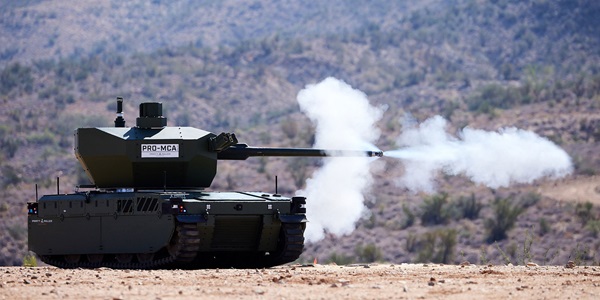Six high school students accepted an internship to learn about building airplanes.
Thwarting America's Enemies
Building the Next Generation Interceptor to Shield Against Advanced Missiles

By Kenneth Kesner
How will we protect American cities from a new generation of intercontinental ballistic missiles (ICBMs)?
New threats demand new defenses, and our teams at Northrop Grumman are already putting in the work to build a better shield against ICBM attacks. The Missile Defense Agency’s (MDA) Ground-Based Midcourse Defense (GMD) system is our country’s top defense against these types of threats; GMD uses a network of land, sea and space-based early warning sensors and fields of ground-based interceptor (GBI) missiles in Alaska and California to protect the United States from long-range ballistic missiles. The interceptors hit the enemy ICBMs in space, destroying them before they can do harm.
GMD is an amazing missile shield, but there have been leaps in technology since the system was declared operational in 2004. Today, U.S. adversaries are testing new missiles with advanced capabilities. These are complex threats featuring multiple warheads and sophisticated countermeasures to hide from detection and confuse interceptors the U.S. may launch to destroy them.
And we know how to defeat them. Our team — which has been a key partner on with the MDA on the GMD system for more than two decades — is leveraging their missile defense expertise to develop a new interceptor missile for GMD that, along with modernized ground systems, will better ensure our safety and deter acts of aggression for decades to come.
A Stronger Shield
To outpace the evolving dangers, MDA asked in 2019 that a next-generation interceptor (NGI) be developed and deployed in 2028. NGI will augment the current interceptors as part of a modernized GMD system. In 2021, we were one of two companies chosen to develop NGI, and as of 2024, we’re a year ahead of schedule. Designing and manufacturing an all-new, incredibly sophisticated missile system can be challenging, but our pace and production readiness could put the new interceptors in silos in 2027.
“We’re already building hardware, not buildings,” said Lisa Brown, vice president for NGI at Northrop Grumman. “We know this mission; we’ve been living it.”
We are now manufacturing NGI solid rocket motor (SRM) cases, mixing propellant in our unique facilities, and will soon begin static-fire testing the three stages of our NGI booster. In January 2024, we put actual hardware in MDA hands as our overall NGI solution passed their exhaustive Preliminary Design Review (PDR).
But it’s getting NGI in the hands of warfighters to protect the nation that is top priority for our team.
“That’s what NGI does — it supports the defense of our country, warfighters and civilian populations everywhere," said Wayne Davidson, a U.S. Air Force veteran who is now senior program manager for NGI at Northrop Grumman.
Production Ready
MDA already selected Northrop Grumman to modernize the GMD ground systems, a program known as the GMD Weapon System (GWS). GWS will modernize legacy software, improve warfighter capabilities and integrate the new NGI missile fleet into the overall GMD system. Put simply, NGI and GWS will work together to ensure American cities are as safe as possible and that our warfighters have what they need — and it’s work Northrop Grumman has already spent decades honing.
“Our experience, readiness and performance empower us to move swiftly toward deployment of an innovative, low-risk NGI solution,” explained Lisa. “We’re ready to deliver, and the nation can’t afford to wait.”
The integration of manufacturing readiness and expertise — including doing things that have never been done before, from stealth bombers to the James Webb Space Telescope — that we bring to this mission is essential, as NGI presents daunting technological challenges, noted Kenn Todorov, Northrop Grumman Mission Systems vice president of Strategic Growth. Kenn, who retired as a U.S. Air Force brigadier general after a 30-year career that included service as MDA’s deputy director from 2014 to 2016, pointed to our teams’ track records and demonstrated ability to deliver complex systems.
“NGI requires an industry partner that can pioneer,” Kenn said. “Our adversaries are designing and building things with the intent to do us harm. The nation urgently needs the next generation of intercept capability to continue to outpace the threat.”
Learn more about our work on the Next Generation Interceptor, and our commitment to missile defense. If you’re interested in defining possible with us, explore what life’s like at Northrop Grumman or check out our career opportunities.
Solving the Toughest Problems
Whether you want to design next-generation aircraft, harness digital technologies or build spacecraft that will return humanity to the moon, working at Northrop Grumman means you’ll contribute to technology that’s transforming the world. Check out our career opportunities to see how you can help define possible.


